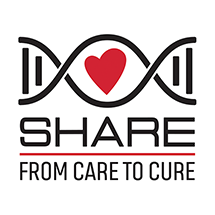I have to say that I’m a bit tired of reading newspaper articles that call cardiomyopathy a rare condition. It’s not. Not in any way. Hypertrophic Cardiomyopathy (HCM) affects nearly 1 in 500 people worldwide. To put it in other terms, HCM affects more people than Cystic Fibrosis, Multiple Sclerosis, Muscular Dystrophy and ALS combined. It seems almost routine at this point to read about an athlete who collapses during or shortly after a workout and is later found to have HCM during their autopsy. It is the most common cause of death in young athletes.
But it’s not just the athletes. It’s the 12 year old walking the hallways between classes in sixth grade. It’s the 22 year old biking to work. It’s the young woman, eagerly awaiting the birth of her first child.
The thing with Hypertrophic Cardiomyopathy is that the people it affects often have no symptoms and look completely healthy. I don’t know how many times I’ve told someone about my condition or that of my daughter and had them respond “But you (she) looks so normal.” Far too often, the first symptom is atrial fibrillation that can lead to sudden cardiac arrest. I’ve been around hundreds of HCM patients during my lifetime and apart from those I saw at the hospital, awaiting or just after a heart transplant; they don’t look sick. People with HCM are all around us, hiding in plain sight.
Hypertrophic Cardiomyopathy is Complex
So, why is it that the headlines still refer to it as a rare condition?
I’ve lived with HCM my whole life, so I have an idea why. HCM isn’t a neat little disease that follows the rules, gives everyone the same symptoms and ends the same way. It plays by it’s own rules within families and even within the same patient. It changes direction, comes on strong only to back off at other times as if giving the patient a reprieve. Some people are completely asymptomatic yet are severely affected, while others with milder cases can have symptoms that effect quality of life in many ways. How can you really know and understand something that is so perplexing?
Something that scientists do know is that there are approximately 2000 individual genetic mutations that cause Hypertrophic Cardiomyopathy. 2000! And those 2000 are mostly in the 10 genes for the major proteins of cardiac muscle.
Until more is known, screenings need to be more commonplace in the doctors’ office. If you know your family medical history, even if it’s just that your Aunt Mildred has heart issue or Grampa Joe died in his 50’s of an apparent heart attack, then so should your doctor. If there is cardiac history in your family, then at the very least make sure you request an echocardiogram and an electrocardiogram (EKG). And if your GP doesn’t appear to be taking you seriously, ask for a second opinion and go to a cardiologist.
You owe it to yourself and to your future generations, because HCM is not as rare as it seems.
So, for those of you out there who share this condition, you are not alone. There are so very many of us and it’s time we raise our voices to the world and say “WE ARE HERE! “ It’s time to dispel the myths about HCM and bring it to the forefront of medical research. It’s time to come out of the shadows and quit hiding in plain sight.
